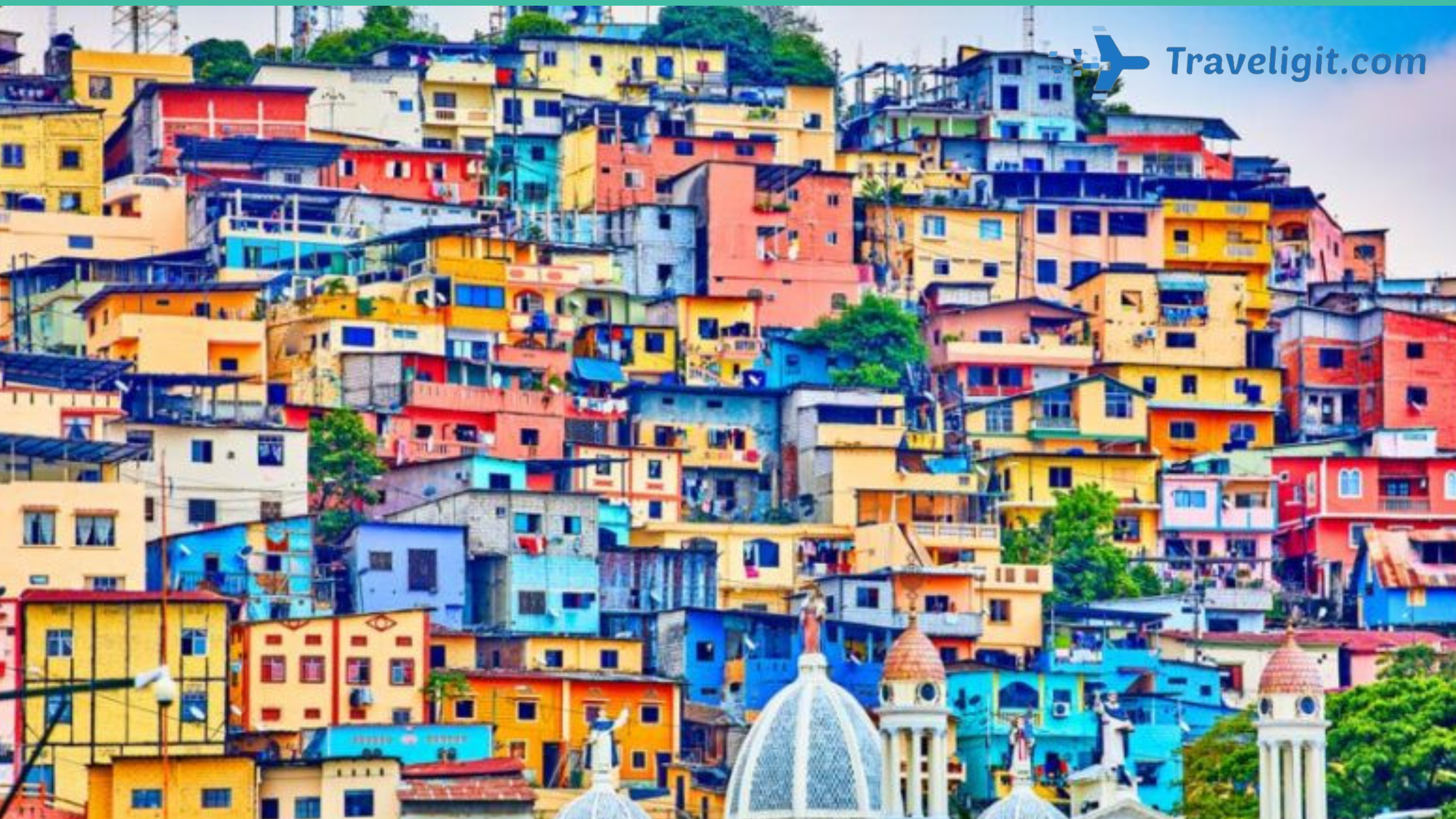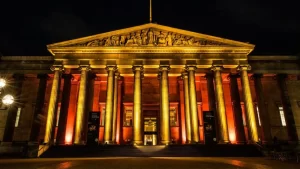Trip to Ecuador With My Family

Family Trip to Ecuador
Thirty years. That’s how much time had passed since my last visit to Ecuador when I was a small child. My recollections are framed by joyous family gatherings, with the aroma of various secos and cangrejo filling the air. And the vivid colors – the deep blues of the ocean at Salinas, old cobblestone streets burning in the hot sun, the myriad hues of the local markets where fruits created a profuse rush of color. Trip to Ecuador

My son and me in Quito
Oh, and the love of my Ecuadorian family, the old familiar faces of cousins, uncles, aunts – and their kind gestures. These memories have stayed with me, and they came flooding back as I descended into Ecuador with my own young family.
After our plane landed, the friendly, engaging smiles of the locals reminded me of the country’s gracious hospitality. Eager to share their culture and stories, they approach tourists with an inviting blend of curiosity and pride, making me feel as though I were an honored guest.
From the vividly colored traditional clothing worn by some to the spontaneous invitations to join family celebrations or taste a homemade delicacy, the welcoming way of Ecuadorians is an integral part of the travel experience here. This sense of belonging weaves through each interaction, leaving visitors with memories, not just of places, but of the people who bring these destinations to life.
Join me on a journey as I unveil some of my highlights as I traveled through Guayaquil and Quito, the two major cities in Ecuador.
Quito (Trip to Ecuador)

Quito, Ecuador
Quito isn’t just a city; it’s a living, breathing museum where the past and future happily coexist. Nestled high in the Andean foothills, Quito is a spectacle of natural beauty, with majestic mountains and volcanoes framing the skyline. The splendor of Quito’s colonial buildings adds to its charm, showcasing a rich mixture of cultural influences and historical eras.
Independence Square (Plaza Grande) is really the pulsating heart of Quito. As the city’s primary public square, it’s not only a hub of historical significance but also a delightful melting pot of attractions. The square features not only affordable, delicious local cuisine but also architectural marvels like the Carondelet Palace, the Archbishop’s Palace, and the Municipal Palace.
The Basilica of San Francisco stands proudly in the historic center of Quito, a beacon of religious and architectural significance. Ecuador’s oldest church, the basilica commands attention with its distinctive design. For just $2, you can receive an hour-long tour that reveals the church’s long history and intricate wooden structure. For the adventurous, a climb up a very dark and narrow staircase leads to the church tower, offering breathtaking views of the city and the square below.

Ciudad Mitad del Mundo and Monument
The Ciudad Mitad del Mundo and Monument offers a singular equatorial experience. This iconic monument represents the country’s unique geographical location, right at the equator, which is also the source of the country’s name, Ecuador. The surrounding area, dotted with artisanal shops and cafés, invites exploration. The shops offer an array of local crafts, showcasing the skill and traditions of Ecuadorian artisans. The restaurants serve up regional delicacies, inviting visitors to savor the flavors of the country.
Remember, the weather here can change rapidly, so come prepared with both an umbrella and sunscreen!
Guayaquil (Trip to Ecuador)

Guayaquil, Ecuador
Air travel in Ecuador is refreshingly straightforward compared to travel in the United States. The efficiency of Quito airport was a pleasant surprise, with its quick and relaxed atmosphere. My short 30-minute flight brought me and my family to a very different setting: Guayaquil, Ecuador’s largest city.
When you arrive in Guayaquil, you immediately notice how different it is from Quito. Unlike Quito with its elevated Andean tranquility, Guayaquil exudes a lively coastal charm, its streets pulsating with a more tropical and cosmopolitan energy. The city’s bustling ports, local shops, and the warm sea breeze create an atmosphere that’s distinctly effervescent.

Parque Seminario, Guayaquil, Ecuador
The heartbeat of Guayaquil is the Riverfront Malecón, a picturesque boardwalk along the Guayas River. This lively spot offers endless shops, eateries, and entertainment options that cater to all budgets. It’s a perfect place to spend a day immersing yourself in the local scene without straining your wallet. For families, the floating Malecón water balls are a must-try. These giant floating water “balloons” on the lake provide a refreshing and fun experience for just $2.50, attracting both kids and adults alike.
The Puerto Santa Ana neighborhood, a stone’s throw from the boardwalk, is Guayaquil’s burgeoning tourist and business district. Known for its safety and luxury, the area boasts upscale international restaurants and vibrant nightlife.
A visit to Guayaquil wouldn’t be complete without experiencing the Parque Seminario, affectionately known as Iguana Park. This urban oasis, amidst the bustle of the city, offers a serene green space where dozens of friendly iguanas roam freely. It’s a casual wildlife encounter that brings a touch of nature to the urban landscape.
The Ecuadorian People (Trip to Ecuador)

My Ecuadorian Family (Trip to Ecuador)
The highlights of our journey to Ecuador were the intimate encounters we had with its people. I particularly cherish the moments we spent with my Ecuadorian family, who treated me as if I had never left. I’ll never forget their warmth and hospitality. Their smiles were genuine and their conversations were rich with stories and laughter, creating an instant camaraderie.
The Ecuadorians’ approach to life, a beautiful blend of simplicity, joy, and community, left a lasting impact on me and my family. Their ability to find happiness in the everyday and their readiness to include visitors in their world was a refreshing change from the often isolated and hurried pace of life elsewhere.
The Ecuadorians’ approach to life, a beautiful blend of simplicity, joy, and community, left a lasting impact on me and my family. Their ability to find happiness in the everyday and their readiness to include visitors in their world was a refreshing change from the often isolated and hurried pace of life elsewhere.
Ecuador didn’t just captivate me with its landscapes and cities; it captured my heart through its people. Their graciousness, zest for life, and the deep sense of community they shared generously with us was truly humbling.
Until we meet again, Ecuador, you will remain in my thoughts, a reminder of the beauty of human connection in our vast world.
FAQs:

Q: What is the best time of year to visit Ecuador?
A: The ideal time to visit Ecuador varies by region. For the Andean highlands, including Quito, June to September is best for dry, sunny weather. The coastal regions, like Guayaquil, are most pleasant from December to April, when it’s warmer and less rainy.
Q: What are the visa requirements for visiting Ecuador?
A: Most travelers, including those from the U.S., Canada, and the EU, do not need a visa for stays up to 90 days. However, a passport valid for at least six months beyond the date of entry is required.
Q: Is Ecuador safe for tourists?
A: Like many tourist destinations, Ecuador is generally safe, but it’s wise to take standard safety precautions. Avoid carrying large sums of cash, stay aware in crowded areas to prevent pickpocketing, and stay informed about the areas you plan to visit.
Q: What is the currency in Ecuador?
A: Ecuador uses the United States Dollar (USD) as its official currency. This makes it convenient for American travelers, but it’s advisable to carry small denominations as change can sometimes be hard to come by.
Q: What is the electrical outlet standard in Ecuador?
A: Ecuador uses the same type of electrical outlets as the United States, with a standard voltage of 110V and a frequency of 60Hz. Travelers from countries with different standards will need an adapter.
Q: Are there any health precautions to consider before traveling to Ecuador?
A: It’s recommended to be up-to-date on routine vaccinations. Depending on your travel plans, vaccines for hepatitis A, typhoid, and yellow fever might be advised. Also, altitude sickness can be a concern in high-altitude areas like Quito, so allow time to acclimatize.
Q: What is the public transportation like in Ecuador?
A: Public transportation in Ecuador is affordable and varied, including buses, taxis, and in some cities, trolleybuses. Buses are the most common and economical way to travel between cities, though they may not always be on schedule.
(Trip to Ecuador)




